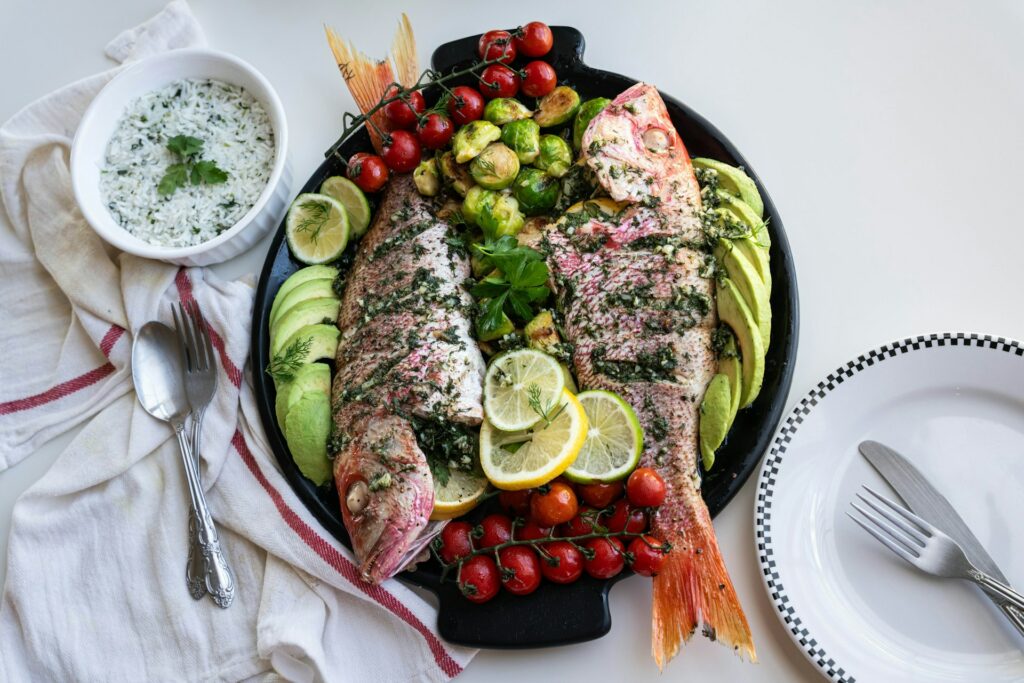When you’ve reeled in a Florida Red Snapper, you’ve caught more than just a fish—you’ve got yourself a prized ingredient, highly regarded by chefs and home cooks alike. Known for its delicate flavor and firm texture, Red Snapper is versatile and can be prepared in countless ways. But to get the most out of this deep-sea delicacy, it’s essential to know how to handle and prepare it correctly from the moment it leaves the water. Let’s walk through the steps you need to take to ensure your catch turns into a culinary masterpiece.
Step 1: Preserving Your Florida Red Snapper
The first thing you’ll want to do once you’ve caught your Florida Red Snapper is to preserve its freshness. This is crucial because, like any fresh seafood, Red Snapper can spoil quickly if not handled properly.
Immediate Cooling
After you’ve caught the fish, place it immediately on ice. The cold temperature will slow down bacterial growth and keep the fish fresh. If possible, keep the fish in a cooler with a drain to prevent it from sitting in water as the ice melts.
Gutting Before Storing
If you’re not planning to cook the fish within a few hours, it’s best to gut it right away. Removing the guts helps prevent spoilage and keeps the meat fresher for a longer period. More on gutting later!
Storage Timeframe
A whole, ungutted fish can stay fresh on ice for about 24 hours, but gutting it can extend its freshness up to 48 hours. If you’re unable to cook it within that time, consider freezing the fish. Wrap it tightly in plastic wrap or vacuum-seal it before freezing to prevent freezer burn.
Step 2: How to Gut a Florida Red Snapper
Gutting the fish is an essential step in the preparation process because enzymes in the viscera (guts) quickly break down the flesh, leading to rapid spoilage. It might seem daunting if you’ve never done it before, but with a little practice, it’s a straightforward task.
Tools You’ll Need
- A sharp fillet knife
- Cutting board
- Gloves (optional, but recommended)
- Bucket or bag for the guts
The Gutting Process
- Lay the fish on its side on a cutting board. Make sure the fish is secure and stable.
- Make a shallow cut from the vent (the small hole near the tail) up to where the gills meet the head. Be careful not to cut too deep, as you want to avoid puncturing the internal organs.
- Open the cavity you’ve just cut into so the internal organs are visible, then make a cut behind the head and next to the tail to separate the organs from the body
- Remove the guts with your hand, large spoon, or the knife. Pull everything out, including the stomach and liver.
- Rinse the cavity thoroughly with cold water to remove any remaining blood and debris.
- Inspect the fish for any remaining organs or blood clots, particularly near the backbone, and remove them.
Step 3: Dressing the Florida Red Snapper
Once the fish is gutted, the next step is dressing it for cooking. This means removing the scales, trimming the fins, and cleaning the fish thoroughly. Epicurious has a wonderful video on the process here:
Scaling the Fish
- Place the fish on a flat surface like a cutting board or in a perforated hotel pan under running water
- Use a fish scaler or the back of a knife to remove the scales. Hold the fish by the tail and work your way from tail to head, scraping against the direction of the scales in a firm consistent motion. Use enough pressure to remove the scales without bruising the flesh.
- Rinse the fish under cold water to wash away loose scales.
Step 4: Cutting the Red Snapper into Portions
Now that your fish is gutted, scaled, and cleaned, it’s time to cut it into portions. The way you cut this small round fish can depend on how you plan to cook it, but this is the most common method.
Filleting
Filleting is the most popular way to portion a Red Snapper, especially if you plan to grill, bake, or pan-sear it.
- Lay the fish flat on a cutting board, with the backbone toward you and the head at your knife hand.
- Make a cut just behind the head and pectoral fin, angling the knife down towards the head.
- Turn the knife and cut along the backbone toward the tail, keeping the blade close to the bones to get as much meat as possible. Hold the fish steady with your other hand, moving slowly.
- Cut Up-and-Over the ribs once the tip of your knife reaches this point. Continue drawing the knife toward the tail with gentle pressure until the filet is completely separated from the fish.
- Repeat on the other side to remove the second filet.
Whole Florida Red Snapper
If you’re roasting or grilling the fish, you might choose to leave it whole. In this case, simply make a few shallow slashes on each side of the fish to allow heat to penetrate evenly.
How Long Will the Fish Last?
Once your Red Snapper is portioned, it’s best to cook it as soon as possible. However, if you need to store it, here are some guidelines:
Fresh Fish
- Filets: Will stay fresh in the refrigerator for 1-2 days.
- Whole Fish: Can last 2-3 days in the fridge if stored on ice.
Frozen Fish
- Filets: Can be frozen for up to 6 months if vacuum-sealed or wrapped tightly.
- Whole Fish: Can be frozen for up to 3 months but might lose some texture.
To thaw frozen fish, move it to the refrigerator the night before you plan to cook it. For a quicker option, you can submerge it in cold water for a few hours, making sure the packaging is watertight. Fish should smell fresh and clean without any stale fishy odor our sourness.
Popular Flavor Combinations for Cooking Red Snapper
Now that your fish is ready to cook, let’s talk about flavors. Florida Red Snapper has a mild, slightly sweet flavor that pairs well with a variety of ingredients. The somewhat firm meat is very moist and becomes noticeably whiter when cooked.
Citrus and Herbs
- Lemon or Lime: A squeeze of fresh citrus juice can brighten up the flavor.
- Parsley, Cilantro, or Dill: These herbs add a fresh, green note that complements the fish’s delicate taste.
- Garlic and Olive Oil: A classic combination that enhances the natural flavor without overpowering it.
Tropical Flavors
- Mango Salsa: A sweet and tangy mango salsa with jalapeños, papaya, and lime juice can add a vibrant touch to grilled or baked snapper.
- Coconut and Lime: A coconut milk marinade with lime zest can give the fish a tropical flair, especially when paired with a side of jasmine rice.
Spice It Up
- Cajun Seasoning: A blend of paprika, cayenne pepper, garlic powder, and other spices can give your Red Snapper a bit of a kick. It pairs especially well with scotch bonnet peppers as well.
- Blackened: Coat the filets in a spicy rub and sear them in a hot cast-iron skillet for a flavorful, crispy crust.
Yes, Chef!
Preparing and cooking Florida Red Snapper can be a rewarding experience that brings out the best of this incredible fish. By following these steps—from properly preserving and gutting to dressing and portioning—you’ll ensure your catch is not only fresh but also delicious. Whether you’re a fan of simple, clean flavors or you like to experiment with bold, exotic combinations, Red Snapper is versatile enough to handle it all.
So, the next time you’re lucky enough to catch one of these beauties, you’ll know exactly what to do to make the most of it. Happy cooking!
To learn more about boating, fishing, or upcoming events, be sure to check out the rest of our blog.

